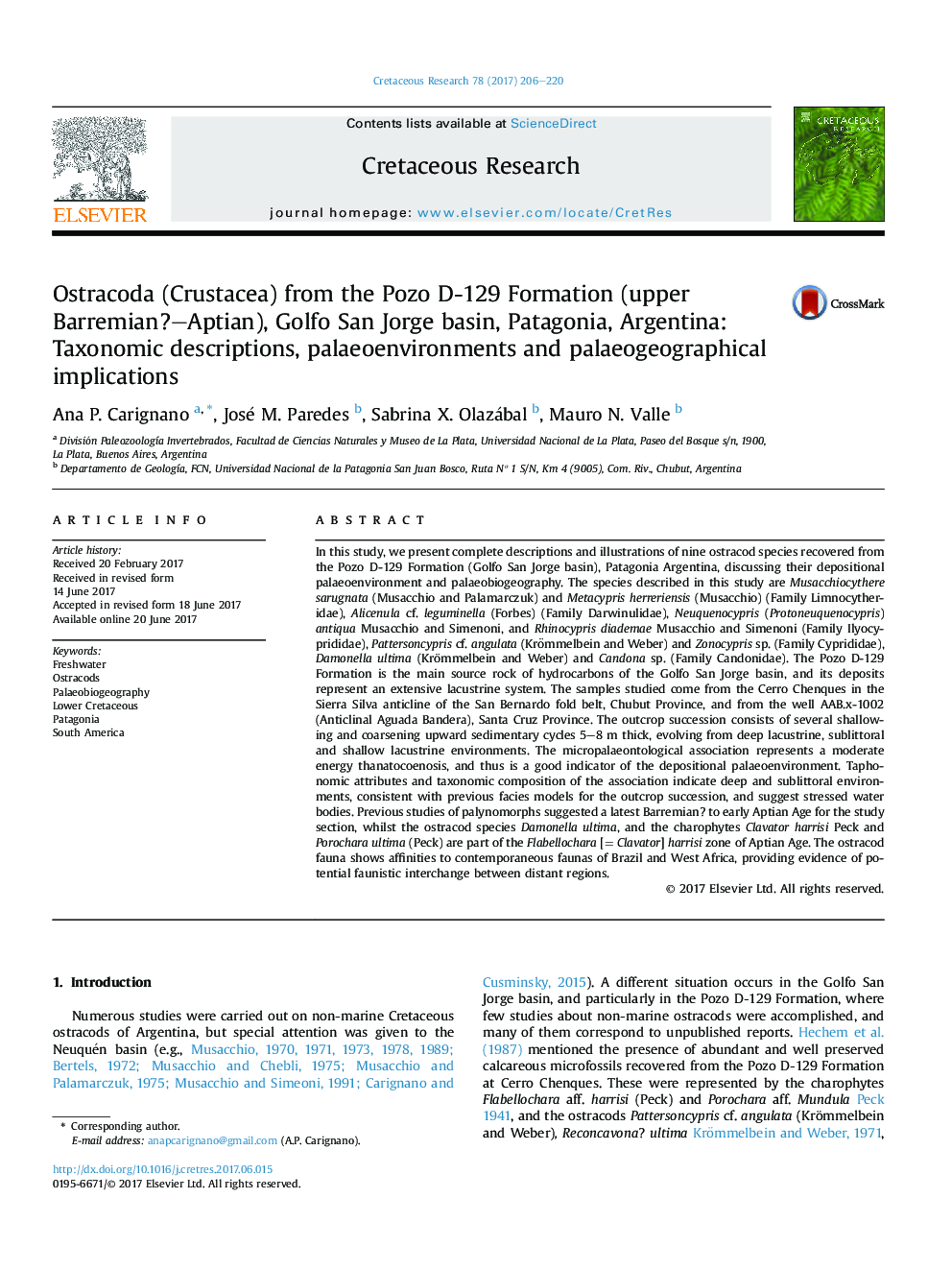| کد مقاله | کد نشریه | سال انتشار | مقاله انگلیسی | نسخه تمام متن |
|---|---|---|---|---|
| 5787924 | 1642045 | 2017 | 15 صفحه PDF | دانلود رایگان |

In this study, we present complete descriptions and illustrations of nine ostracod species recovered from the Pozo D-129 Formation (Golfo San Jorge basin), Patagonia Argentina, discussing their depositional palaeoenvironment and palaeobiogeography. The species described in this study are Musacchiocythere sarugnata (Musacchio and Palamarczuk) and Metacypris herreriensis (Musacchio) (Family Limnocytheridae), Alicenula cf. leguminella (Forbes) (Family Darwinulidae), Neuquenocypris (Protoneuquenocypris) antiqua Musacchio and Simenoni, and Rhinocypris diademae Musacchio and Simenoni (Family Ilyocyprididae), Pattersoncypris cf. angulata (Krömmelbein and Weber) and Zonocypris sp. (Family Cyprididae), Damonella ultima (Krömmelbein and Weber) and Candona sp. (Family Candonidae). The Pozo D-129 Formation is the main source rock of hydrocarbons of the Golfo San Jorge basin, and its deposits represent an extensive lacustrine system. The samples studied come from the Cerro Chenques in the Sierra Silva anticline of the San Bernardo fold belt, Chubut Province, and from the well AAB.x-1002 (Anticlinal Aguada Bandera), Santa Cruz Province. The outcrop succession consists of several shallowing and coarsening upward sedimentary cycles 5-8Â m thick, evolving from deep lacustrine, sublittoral and shallow lacustrine environments. The micropalaeontological association represents a moderate energy thanatocoenosis, and thus is a good indicator of the depositional palaeoenvironment. Taphonomic attributes and taxonomic composition of the association indicate deep and sublittoral environments, consistent with previous facies models for the outcrop succession, and suggest stressed water bodies. Previous studies of palynomorphs suggested a latest Barremian? to early Aptian Age for the study section, whilst the ostracod species Damonella ultima, and the charophytes Clavator harrisi Peck and Porochara ultima (Peck) are part of the Flabellochara [= Clavator] harrisi zone of Aptian Age. The ostracod fauna shows affinities to contemporaneous faunas of Brazil and West Africa, providing evidence of potential faunistic interchange between distant regions.
Journal: Cretaceous Research - Volume 78, October 2017, Pages 206-220